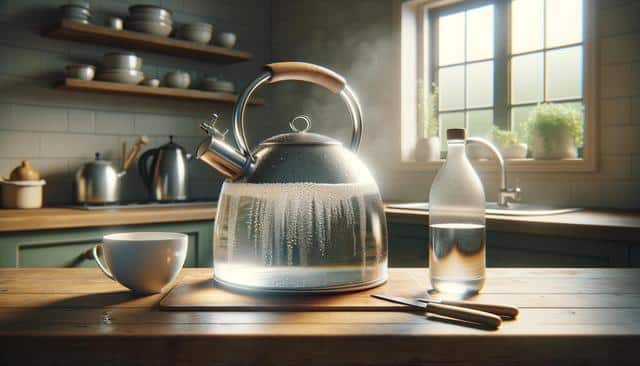
How To Descale A Kettle With Vinegar: A Simple and Effective Method
Understanding Why Descaling Matters
Descaling your kettle is not just about keeping it looking clean—it’s essential for maintaining its performance and longevity. Over time, minerals from hard water, primarily calcium and magnesium, accumulate inside the kettle. This buildup, known as limescale, can hinder the kettle’s ability to heat water efficiently and may even lead to early wear and tear. Additionally, limescale can flake off into your drinks, affecting the taste and quality of your tea or coffee. Regular descaling helps prevent these issues and ensures your appliance continues to function smoothly.
Vinegar is a natural and cost-effective solution for this problem. Its high acidity level makes it effective at breaking down mineral deposits. Unlike harsh chemical descalers, vinegar is safe, non-toxic, and readily available in most households. Using vinegar to descale your kettle is not only environmentally friendly but also gentle on the appliance itself, reducing the risk of damage that can occur with more abrasive cleaning agents.
Preparing Your Kettle for Descaling
Before you begin the descaling process, it’s important to ensure your kettle is empty and unplugged. If there’s any remaining water inside, pour it out and give the interior a quick rinse. This step will help remove any loose debris or residue and allow the vinegar solution to work more effectively.
Next, gather your materials. You’ll need:
- White vinegar (distilled is preferred)
- Fresh water
- A soft cloth or sponge
- A small brush (such as a toothbrush) for stubborn spots
Once you have everything ready, you can proceed to the next step. It’s also wise to open any windows or ensure proper ventilation in the area, as the vinegar smell can be strong during the process. While it’s not harmful, some may find the odor unpleasant.
The Vinegar Descaling Process
To descale your kettle with vinegar, fill it halfway with equal parts white vinegar and water. For example, if your kettle holds one liter, use 500 ml of vinegar and 500 ml of water. Plug in the kettle and bring the solution to a boil. Once it reaches boiling point, switch off the kettle and unplug it. Allow the mixture to sit for about 15 to 30 minutes. This soaking time is crucial, as it gives the vinegar time to break down the limescale deposits effectively.
If the buildup is particularly thick, you can let the solution sit for up to an hour. After soaking, pour out the vinegar solution. You may notice flakes or cloudy water—this is a good sign that the limescale is dissolving. Use a soft sponge or brush to gently scrub any remaining mineral deposits inside the kettle, especially around the heating element or base where buildup tends to concentrate.
Rinsing and Finishing Touches
After descaling, it’s important to rinse the kettle thoroughly to remove any vinegar residue. Rinse the interior with cool water several times until the vinegar smell is completely gone. To ensure no aftertaste remains, fill the kettle with fresh water, bring it to a boil, and discard the water. Repeat this step once or twice if necessary.
For the exterior of the kettle, wipe it down with a damp cloth. If the kettle has a filter or spout screen, check if it’s removable and clean it separately under running water. These components can also collect mineral deposits and impact the quality of your drinks. Regular maintenance, including cleaning these parts, will help keep your kettle in great condition.
Here’s a quick recap of the process:
- Empty and rinse the kettle
- Fill halfway with equal parts vinegar and water
- Boil, then let sit for 15–30 minutes
- Discard solution and scrub if needed
- Rinse thoroughly and boil fresh water to eliminate odor
How Often Should You Descale?
The frequency of descaling depends on the hardness of the water in your area and how often you use the kettle. In regions with hard water, limescale can accumulate quickly. As a general guideline:
- Descale every 1–2 months if you use the kettle daily with hard water
- Every 3 months for moderate usage or soft water areas
- More frequently if you notice visible buildup or changes in heating time
Using filtered water can help slow down limescale formation, reducing the need for frequent descaling. However, even with filtered water, occasional cleaning with vinegar is still recommended to maintain optimal performance. By making descaling a routine task, you can extend the life of your kettle and ensure your hot beverages always taste fresh.


